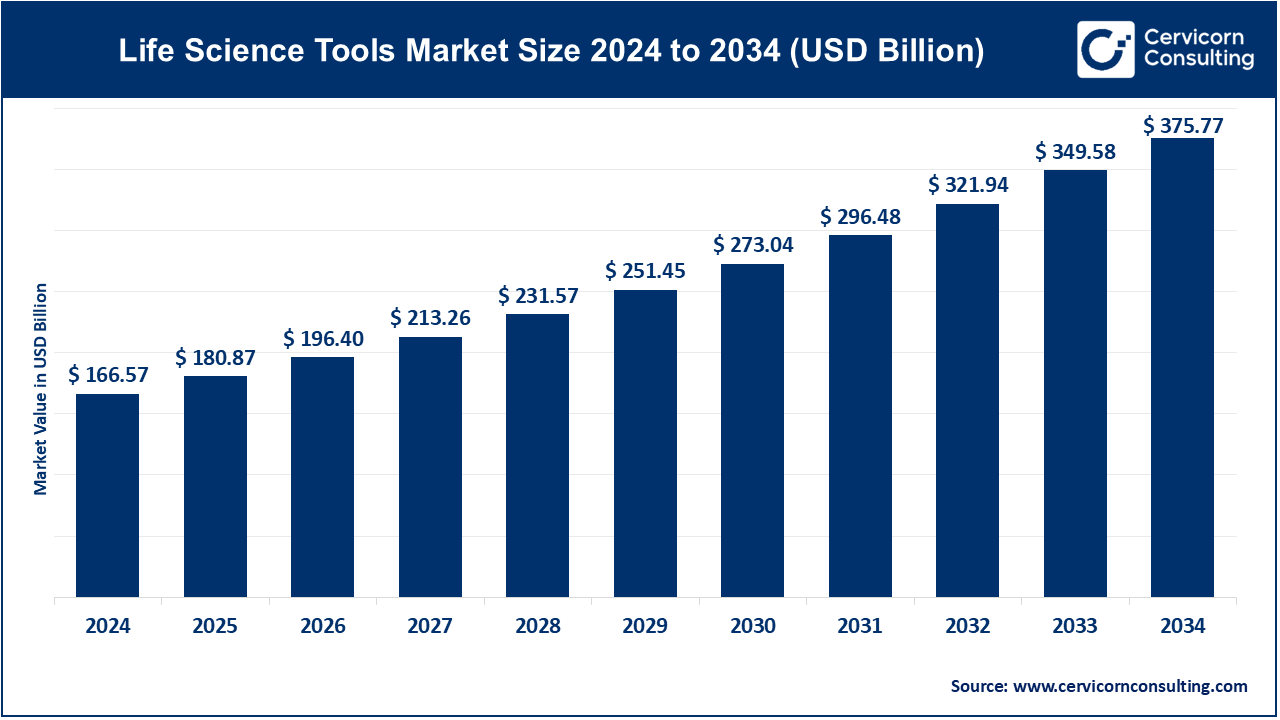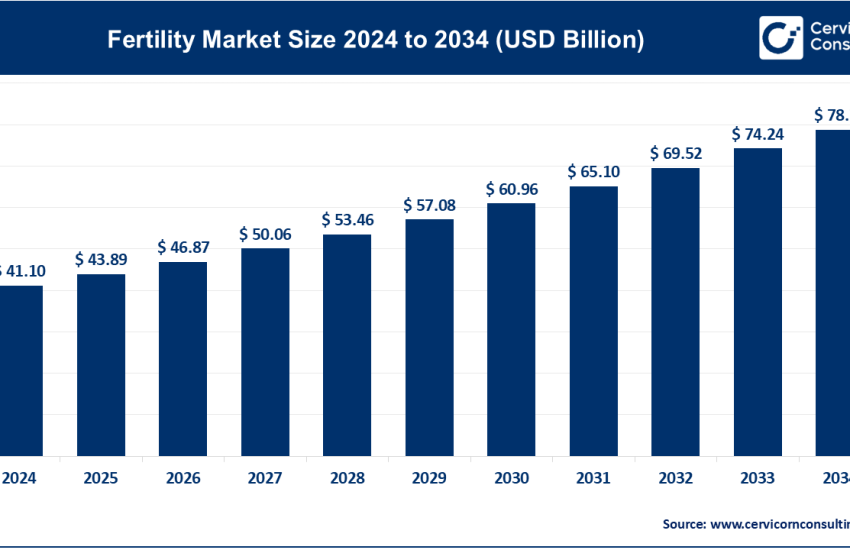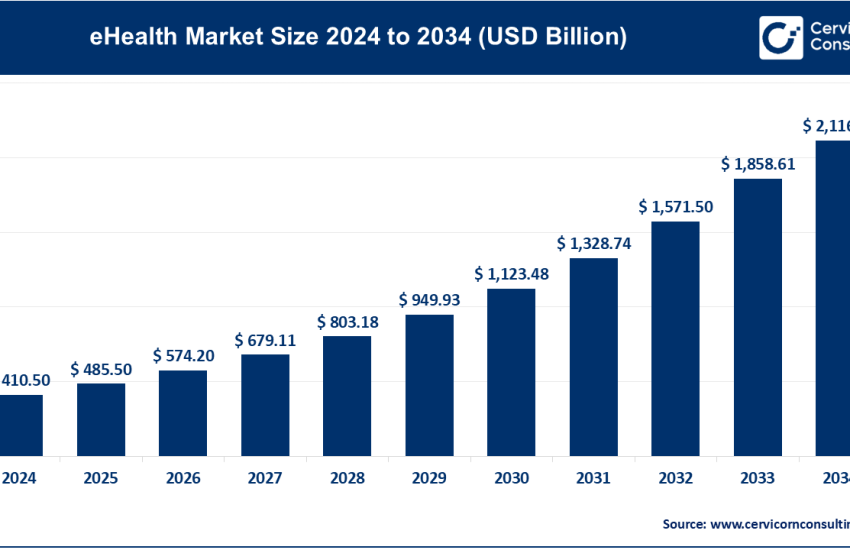Life Science Tools Market Growth, Trends, and Key Players 2025-2034
Life Science Tools Market Overview
The global life science tools market was worth USD 166.57 billion in 2024 and is anticipated to expand to around USD 375.77 billion by 2034, registering a compound annual growth rate (CAGR) of 8.48% between 2025 and 2034.
The life science tools market has been experiencing rapid growth due to a multitude of factors, including advances in genomics, proteomics, and cell biology research. Increased investments in biotechnology and healthcare, driven by the growing demand for personalized medicine and rising prevalence of chronic diseases, have further bolstered the market.
Additionally, the COVID-19 pandemic has accelerated the need for diagnostic tools and innovative therapies, significantly impacting the adoption of life science tools. Technological advancements in automation, digitalization, and data analytics have enhanced the efficiency of life science research, expanding the market’s scope. Research institutions, pharmaceutical companies, and clinical laboratories are major consumers of life science tools, leading to market diversification. The availability of precise instruments and tools that aid in understanding complex biological systems is a key growth factor, paving the way for breakthroughs in drug discovery and development.
Furthermore, government support, such as funding for scientific research and healthcare improvements, is fueling further market expansion. As demand for better research tools continues to increase globally, the Life Science Tools market is expected to witness continued growth in the coming years.
What is the Life Science Tools Market?
The life science tools market encompasses a broad range of products, technologies, and services used in biological and medical research. It includes instruments, reagents, and consumables used for analyzing, characterizing, and manipulating biological systems at molecular, cellular, and physiological levels. Life science tools are integral to advancing research in areas such as genomics, proteomics, diagnostics, drug discovery, and biotechnology. These tools are used by a variety of end-users, including pharmaceutical companies, biotechnology firms, academic and research institutions, and clinical laboratories. As the demand for personalized medicine and advanced healthcare technologies grows, the Life Science Tools market is increasingly becoming an essential part of the global healthcare ecosystem, enabling new therapies, diagnostics, and scientific discoveries.
Why is the Life Science Tools Market Important?
The life science tools market plays a critical role in scientific research and healthcare innovation. It provides the necessary instruments, techniques, and data for researchers to better understand biological systems, ultimately leading to advancements in medical treatments, drug development, and disease prevention. By enabling precision medicine, life science tools facilitate the tailoring of therapies to individual patients based on genetic and molecular information.
Moreover, these tools are crucial for detecting, diagnosing, and monitoring diseases, including cancer, infectious diseases, and genetic disorders. As the world faces an aging population and increasing healthcare needs, the demand for efficient, cost-effective, and accurate life science tools is growing. Their ability to accelerate scientific breakthroughs has the potential to change lives, making them an essential part of the healthcare and biotechnology industries.
Get a Free Sample: https://www.cervicornconsulting.com/sample/2355
Key Companies in the Global Life Science Tools Market
- Thermo Fisher Scientific, Inc.
- Specialization: Thermo Fisher Scientific is a leader in providing a comprehensive range of life science tools, including laboratory instruments, reagents, and consumables. Their offerings span a wide range of scientific disciplines, including genomics, proteomics, and cell biology.
- Key Focus Areas: Genomic research, molecular biology, analytical instruments, laboratory supplies, and diagnostics.
- Notable Features: Thermo Fisher’s products are known for high accuracy, precision, and reliability. The company focuses heavily on innovation and frequently launches new products to meet the needs of researchers.
- 2024 Revenue (approx.): $45 billion
- Market Share (approx.): 22%
- Global Presence: Thermo Fisher operates in over 50 countries, with a significant presence in North America, Europe, and Asia-Pacific.
- Merck KGaA (EMD Millipore)
- Specialization: Merck KGaA specializes in life science research and laboratory solutions, focusing on technologies for drug discovery, bio-manufacturing, and diagnostics.
- Key Focus Areas: Reagents and consumables for research, cell culture media, filtration products, and laboratory automation.
- Notable Features: Merck is known for its commitment to sustainability and innovation in biotechnology and life sciences, with a strong emphasis on developing solutions for cell therapy and gene editing.
- 2024 Revenue (approx.): $34 billion
- Market Share (approx.): 14%
- Global Presence: Merck operates in over 70 countries worldwide, with strong market share in Europe and North America.
- Agilent Technologies, Inc.
- Specialization: Agilent Technologies is a leader in analytical instruments, reagents, and consumables for research, diagnostics, and life science applications.
- Key Focus Areas: Chromatography, mass spectrometry, molecular biology, and DNA sequencing.
- Notable Features: Agilent is known for its high-quality laboratory equipment, software solutions, and strong R&D capabilities.
- 2024 Revenue (approx.): $8.5 billion
- Market Share (approx.): 6%
- Global Presence: Agilent has a strong presence in North America, Europe, and Asia, particularly in the pharmaceutical and diagnostics sectors.
- Danaher Corporation (Beckman Coulter)
- Specialization: Danaher focuses on diagnostic instruments, laboratory equipment, and life sciences tools for clinical and research applications.
- Key Focus Areas: Analytical instrumentation, diagnostics, cell analysis, and laboratory automation.
- Notable Features: Known for its high-quality, reliable diagnostic and laboratory instruments, Danaher is particularly strong in the clinical diagnostics sector.
- 2024 Revenue (approx.): $30 billion
- Market Share (approx.): 10%
- Global Presence: Danaher operates in over 60 countries, with a significant presence in the United States, Europe, and Asia.
- Bio-Rad Laboratories, Inc.
- Specialization: Bio-Rad Laboratories provides life science research tools, focusing on protein analysis, cell biology, and molecular biology.
- Key Focus Areas: PCR, qPCR, electrophoresis, Western blotting, and immunoassays.
- Notable Features: Bio-Rad is known for its expertise in immunology and protein research, offering a wide range of innovative tools for life sciences.
- 2024 Revenue (approx.): $3.7 billion
- Market Share (approx.): 4%
- Global Presence: Bio-Rad operates globally, with strong footholds in North America, Europe, and Asia-Pacific.
Leading Trends and Their Impact on the Life Science Tools Market
The life science tools market is witnessing several leading trends that are shaping its future. One of the most significant trends is the rise of automation and digitalization in laboratory processes. With the need for faster and more accurate results, researchers are increasingly adopting automated systems that can improve workflow efficiency and reduce human error. Artificial intelligence (AI) and machine learning (ML) are being integrated into life science tools to enhance data analysis, enabling more sophisticated insights and faster decision-making.
Another trend is the increasing focus on personalized medicine, which is driving demand for advanced tools that can analyze genetic and molecular data to tailor treatments for individual patients. As the healthcare landscape shifts toward precision medicine, life science tools that support genomics, transcriptomics, and proteomics research are gaining traction.
Moreover, advancements in CRISPR technology and gene editing are fueling the demand for life science tools that can support gene therapy research and clinical applications. As more companies and research institutions work on developing gene therapies, the demand for tools to aid in this complex and precise work is expected to increase.
Successful Examples of Life Science Tools Market Around the World
One notable example of the impact of life science tools is the development of CRISPR-based gene editing technologies. CRISPR has revolutionized molecular biology and is now widely used in medical research, gene therapy, and drug development. Companies like Thermo Fisher and Merck KGaA have developed products that support CRISPR research, allowing for more precise and efficient gene editing.
In diagnostics, companies such as Bio-Rad Laboratories and Danaher Corporation have developed innovative PCR-based tools used in detecting infectious diseases like COVID-19. Their diagnostic products played a crucial role in the global response to the pandemic, demonstrating how life science tools can have a direct impact on public health.
Regional Analysis and Government Initiatives Shaping the Market
In North America, government initiatives such as funding for biomedical research, particularly in genomics and biotechnology, have played a significant role in shaping the Life Science Tools market. The U.S. government’s investment in research institutions and healthcare innovation is driving demand for life science tools, as is the increasing focus on personalized medicine.
In Europe, government policies promoting research in healthcare and biotechnology are fueling market growth. The European Union has set ambitious goals for healthcare innovation, and many of the region’s leading life science companies, like Merck KGaA, are benefitting from these initiatives.
In Asia-Pacific, countries like China and India are seeing rapid growth in the Life Science Tools market due to increased investments in research and biotechnology. China’s government has committed to becoming a global leader in biotechnology, which is spurring demand for life science tools, while India’s growing healthcare infrastructure is driving adoption of diagnostic and laboratory tools.
To Get Detailed Overview, Contact Us: https://www.cervicornconsulting.com/contact-us
Read Report: In Vitro Diagnostics (IVD) Market Trends, Growth, Insights 2024-2033



